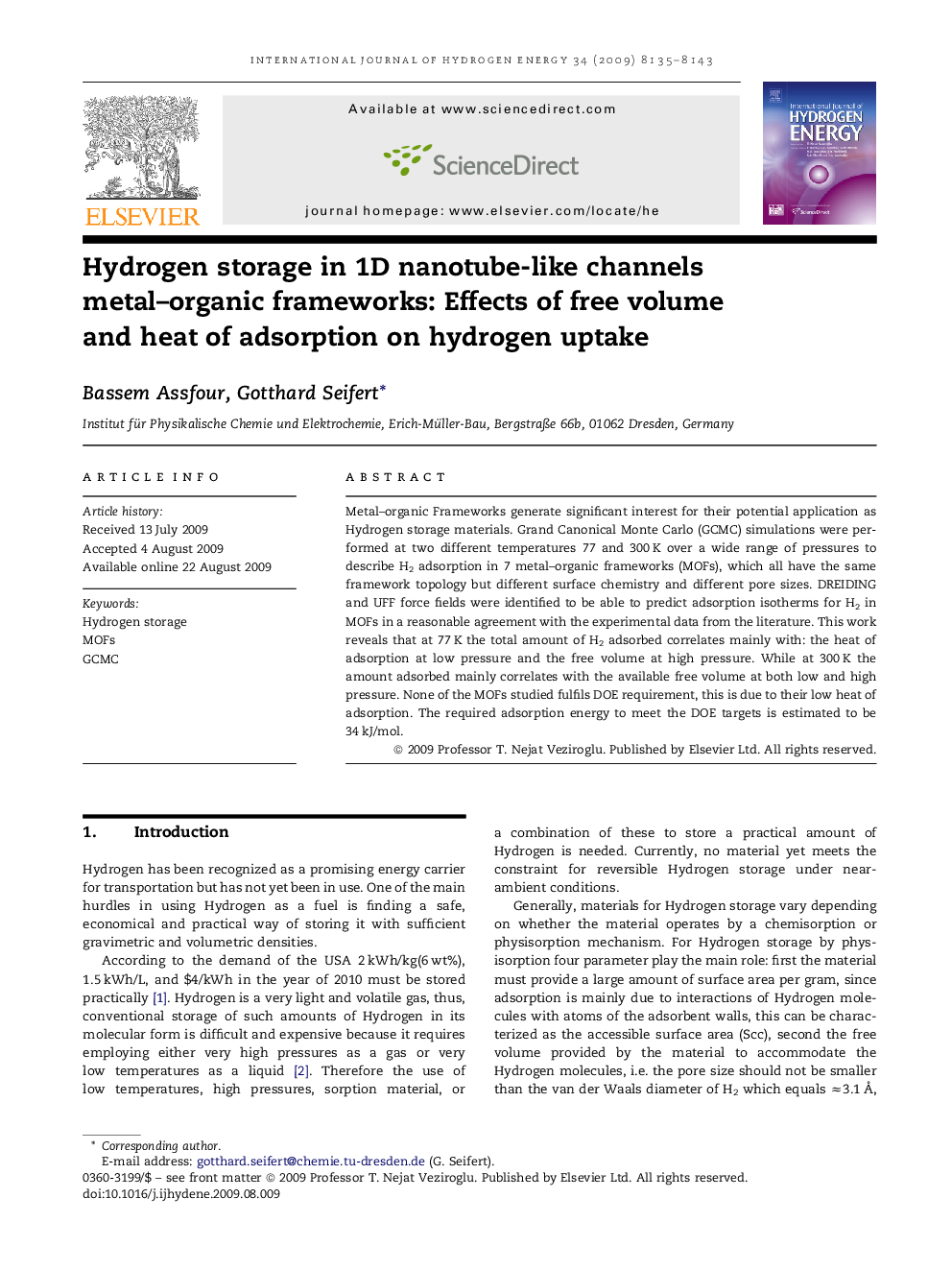| Article ID | Journal | Published Year | Pages | File Type |
|---|---|---|---|---|
| 1283073 | International Journal of Hydrogen Energy | 2009 | 9 Pages |
Metal–organic Frameworks generate significant interest for their potential application as Hydrogen storage materials. Grand Canonical Monte Carlo (GCMC) simulations were performed at two different temperatures 77 and 300 K over a wide range of pressures to describe H2 adsorption in 7 metal–organic frameworks (MOFs), which all have the same framework topology but different surface chemistry and different pore sizes. DREIDING and UFF force fields were identified to be able to predict adsorption isotherms for H2 in MOFs in a reasonable agreement with the experimental data from the literature. This work reveals that at 77 K the total amount of H2 adsorbed correlates mainly with: the heat of adsorption at low pressure and the free volume at high pressure. While at 300 K the amount adsorbed mainly correlates with the available free volume at both low and high pressure. None of the MOFs studied fulfils DOE requirement, this is due to their low heat of adsorption. The required adsorption energy to meet the DOE targets is estimated to be 34 kJ/mol.
